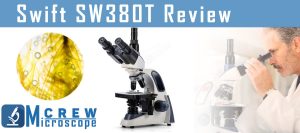img { width: 750px; } iframe.movie { width: 750px; height: 450px; } Казино Play Fortuna ваш идеальный выбор для азартных игр Казино Play Fortuna ваш идеальный выбор для азартных игр Чувствуйте себя комфортно, играя в живых казино и игровых автоматах Play Fortuna. Более 1000 развлечений ждут вас, от классики до новинок. Получите доступ к уникальным бонусам уже при регистрации. Легкий интерфейс и быстрая навигация упрощают процесс … [Read more...]
AmScope B120C Microscope Review
AmScope B120C is considered one of the best microscopes for students, researchers, and microbiology enthusiasts at an affordable price. Previously AmScope B120C did not come with a camera, but now you can choose your preferred camera resolution to buy with the microscope. Choose from 1 MP, 3 MP, or 5 MP cameras, or purchase one without the connected cam – all up to your preference. It is an adequate choice of a microbiology microscope to … [Read more...]
Swift SW380T Compound Microscope Review
If you are thinking of buying a microscope to study cells and tissues, a high-magnification microscope is the best choice! High-magnification microscopes are important, especially when studying microscopic specimens only visible under a microscope. These instruments are usually used as biology or microbiology microscopes in schools, research labs, and industries. Microscopes in biological research industries are typically up to 2500x, … [Read more...]
What is a Dissecting Microscope Used for?
Microscopes are among the most useful inventions that have visualized tiny objects for centuries. Scientists usually utilize two types of microscopes: compound light microscope and dissecting (stereo) microscope. We are here to discuss the uses of a dissecting microscope, but first, let’s glance at its history and structure. Dissecting Microscope - Brief History Scientists were struggling to invent the dissecting microscope. Cherudin … [Read more...]
Why do Many Biologists Prefer a Phase Contrast Microscope?
Phase-contrast microscopy is among the oldest and the easiest methods to enlarge biological specimens. Dutch Scientist Frits Zernike first introduced it in the 1930s. He proposed that one can utilize the contrast-enhancing technique to develop a relatively higher contrast image of the set specimen. Typically, biologists use this unique microscopy to analyze living cells, thin tissues, microorganisms, organelles, glass fragments, fibers, and much … [Read more...]




